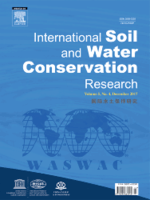
International Soil and Water Conservation Research
Scope & Guideline
Advancing sustainable solutions for soil and water conservation.
Introduction
Aims and Scopes
- Soil Erosion and Conservation Techniques:
Research on various methods to assess, model, and mitigate soil erosion, including the development and validation of predictive models like WEPP and RUSLE. - Water Resource Management:
Studies focusing on the management of water resources in agricultural and natural landscapes, including the impacts of land use changes and conservation practices on water availability and quality. - Remote Sensing and Geospatial Analysis:
Utilization of remote sensing technologies and GIS for mapping and monitoring soil and water conservation efforts, assessing land degradation, and analyzing environmental impacts. - Impact of Climate Change on Soil and Water Dynamics:
Investigations of how climate variability affects soil and water conservation practices, including drought resilience and adaptation strategies. - Soil Quality and Nutrient Management:
Research aimed at understanding soil health dynamics, nutrient cycling, and the effects of agricultural practices on soil quality and productivity. - Integrated Watershed Management:
Holistic approaches to managing watersheds that incorporate soil and water conservation strategies, enhancing ecosystem services, and promoting sustainable land use.
Trending and Emerging
- Machine Learning and AI in Soil and Water Research:
An increasing number of studies are utilizing machine learning and artificial intelligence to analyze complex soil and water dynamics, optimize conservation practices, and predict erosion and runoff. - Climate Adaptation Strategies:
Research focused on developing and implementing soil and water conservation practices that enhance resilience to climate change, including drought management and flood mitigation. - Multi-Temporal Remote Sensing Applications:
There is a growing trend in the use of multi-temporal remote sensing data for monitoring soil erosion, land use changes, and the effectiveness of conservation measures over time. - Interdisciplinary Approaches to Conservation:
Emerging research emphasizes interdisciplinary methods that combine ecological, hydrological, and agricultural perspectives to address soil and water conservation challenges. - Sustainable Agricultural Practices:
An increase in studies exploring the integration of conservation practices in agricultural systems, focusing on enhancing soil fertility, reducing erosion, and improving water use efficiency.
Declining or Waning
- Traditional Soil Conservation Techniques:
Research on conventional soil conservation practices is declining as newer methodologies and technologies (such as precision agriculture and remote sensing) gain prominence. - Basic Erosion Mechanisms:
While foundational studies on erosion processes are important, there has been a shift towards more applied and innovative research, leading to fewer publications focused solely on basic erosion mechanisms. - Historical Soil Studies:
There is a waning interest in historical analyses of soil conditions and erosion, as contemporary studies increasingly emphasize current challenges and future projections. - Land Use Change Studies:
Research specifically focused on land use change impacts on soil and water conservation is decreasing, as integrated approaches that consider multiple factors are becoming more popular. - Low-tech Soil and Water Conservation Practices:
There is a noticeable reduction in the publication of studies focusing on traditional, low-tech conservation practices, as emphasis shifts towards advanced, technology-driven solutions.
Similar Journals

Terra Latinoamericana
Connecting Scholars to Shape Ecological FuturesTerra Latinoamericana is a prominent academic journal published by the Mexican Society of Soil Science, focusing on the essential disciplines of soil science, biochemistry, and ecology. With a dedicated commitment to open access since 2014, this journal provides a platform for researchers and professionals to disseminate and access cutting-edge research aimed at understanding soil interactions, environmental pollution, and ecosystems within Latin America. The journal holds a Q4 ranking in multiple categories, including Ecology and Soil Science, reflecting its growing presence in the academic landscape and its role in fostering scholarly communication within these fields. Though currently positioned in the lower quartiles, Terra Latinoamericana presents a valuable opportunity for emerging scholars and experienced researchers alike to contribute impactful findings and engage with key issues affecting soil health and ecological sustainability in diverse environments. By promoting innovative research and collaborative dialogue, this journal continues to shape the future of soil science and related disciplines, making it an indispensable resource for the scientific community.
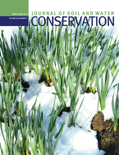
JOURNAL OF SOIL AND WATER CONSERVATION
Advancing sustainable practices for a greener tomorrow.The JOURNAL OF SOIL AND WATER CONSERVATION, published by the Soil Water Conservation Society, is a leading peer-reviewed journal dedicated to the critical fields of agronomy, soil science, and water conservation. With its inception in 1973 and a convergence period extending to 2024, the journal plays a pivotal role in disseminating innovative research, management practices, and policy analysis aimed at promoting sustainable land and water resource management. The journal boasts an impressive Impact Factor and ranks in the Q1 and Q2 quartiles across key categories, including Agronomy and Crop Science, Nature and Landscape Conservation, and Water Science and Technology. It serves as an essential platform for researchers, professionals, and students to engage with cutting-edge findings that address pressing environmental challenges. Through its commitment to advancing the science of soil and water conservation, this journal remains a vital resource for enhancing ecological integrity and promoting sustainable agricultural practices.
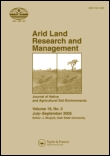
ARID LAND RESEARCH AND MANAGEMENT
Pioneering research for a sustainable future in arid regions.ARID LAND RESEARCH AND MANAGEMENT is a leading journal in the field of Soil Science, published by Taylor & Francis Inc in the United Kingdom. With a focus on the sustainable management of arid and semi-arid lands, this journal aims to bridge the gap between scientific research and practical application. It garners a respectable impact factor, categorically positioned in the Q2 quartile within its field and ranks 59th out of 159 in Scopus, representing the top 63rd percentile of journals in Agricultural and Biological Sciences - Soil Science. As an essential resource for researchers, practitioners, and students alike, ARID LAND RESEARCH AND MANAGEMENT publishes high-quality, peer-reviewed articles that cover a wide range of topics, from soil conservation techniques to innovative land management practices. Open access options are available, facilitating broader dissemination of knowledge critical to addressing global challenges associated with arid environments. Targeting a pivotal area of study, this journal plays a significant role in advancing the understanding and management of these unique ecosystems, making it a valuable asset for anyone engaged in environmental sustainability.

SOIL SCIENCE SOCIETY OF AMERICA JOURNAL
Fostering Sustainable Practices Through Soil StudiesWelcome to the SOIL SCIENCE SOCIETY OF AMERICA JOURNAL, a premier publication in the field of soil science, published by WILEY. With a distinguished history dating back to 1976, this journal has consistently provided a platform for researchers to share innovative findings and insights into soil’s critical role in agricultural and ecological systems. Featuring an impressive Q1 category ranking in Soil Science and positioned within the top 25% of its field according to Scopus, this journal is recognized for its impactful contributions to advancing our understanding of soil dynamics. While not an open-access journal, it remains a valuable resource for academics and professionals alike, with distinguished articles that meet the highest scientific standards. As it enters its converged years from 1976 to 2024, the journal aims to continue shaping the future of soil research, offering valuable knowledge to students, researchers, and practitioners dedicated to sustainable land management and environmental preservation.

Soil Research
Uncovering the secrets beneath our feet.Soil Research, published by CSIRO PUBLISHING, is an esteemed scholarly journal dedicated to advancing the field of soil science, environmental science, and earth-surface processes. With an ISSN of 1838-675X and E-ISSN of 1838-6768, this journal serves as a vital platform for researchers and professionals to disseminate innovative findings and engage with contemporary challenges in soil and environmental management. The journal is recognized for its impactful contributions, as evidenced by its Q2 ranking in 2023 across multiple categories including Earth-Surface Processes, Environmental Science, and Soil Science, reflecting its influence and relevance in these critical academic areas. Operating from its headquarters in Clayton, Victoria, Australia, Soil Research is committed to fostering open access to research, ensuring wider dissemination of knowledge. As it converges toward its future objectives until 2024, the journal aims to provide a forum for diverse perspectives that enhance understanding and stewardship of soil resources, making it an indispensable resource for students, researchers, and industry professionals alike.

Revista Agrogeoambiental
Connecting Researchers and Practitioners for a Sustainable WorldRevista Agrogeoambiental is a prestigious open-access academic journal dedicated to the field of agricultural and environmental sciences. Published by INST FEDERAL SUL MINAS GERAIS-I FSULDEMINAS since 2009, this journal stands as a vital forum for the dissemination of research findings, innovative methodologies, and interdisciplinary studies that address critical issues in agriculture and environmental sustainability. With a focus on promoting knowledge exchange among researchers, practitioners, and educators, Revista Agrogeoambiental seeks to enhance understanding of agroecological systems and their interaction with geospatial frameworks. As an open-access journal, it ensures that cutting-edge research is accessible to a wide audience, thereby fostering collaboration and knowledge-sharing in the global academic community. Researchers and professionals can benefit from the journal's commitment to high standards of scholarship, as well as its role in shaping policy and practice within the agricultural and environmental sectors.

Revista Caatinga
Bridging Knowledge in Agricultural and Biological SciencesRevista Caatinga is a premier open-access journal published by Universidade Federal Rural do Semi-Árido (UFERSA), dedicated to the dissemination of significant research within the field of Agricultural and Biological Sciences. Since its inception in 2006, the journal has aimed to bridge the knowledge gap in various aspects of agricultural practices and biological phenomena, making vital contributions to the scientific community. With its publications indexed in Scopus and holding an impressive Q2 categorization in the competitive landscape of agricultural sciences, the journal ranks within the top half of its category (100/221), demonstrating a commitment to quality scholarship. The journal is based in Brazil and covers a wide array of topics relevant to both local and global agricultural challenges. By fostering open access, Revista Caatinga ensures that vital research is available to a broad audience, promoting knowledge sharing and collaboration among researchers, practitioners, and students around the world.
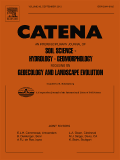
CATENA
Advancing Earth-Surface Science Through Rigorous ResearchCATENA is a distinguished academic journal published by Elsevier, focusing on the critical field of Earth-Surface Processes. With a solid foundation established in 1973, CATENA has continuously evolved, offering a platform for high-impact research and groundbreaking discoveries in geosciences. The journal holds an impressive Scopus rank of #8 out of 179 in its category, placing it in the top 5% of its field, which underscores its importance and influence among researchers and practitioners alike. While CATENA does not operate under an open access model, its commitment to disseminating essential findings is evident in its rigorous peer-review process and inclusion of diverse studies. Located in the Netherlands, CATENA not only serves as an essential resource for professionals and students but also contributes valuable insights that help address global environmental challenges.
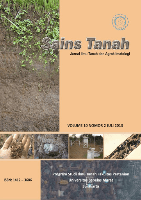
SAINS TANAH
Advancing Agronomy Through Open Access ResearchSAINS TANAH is a renowned peer-reviewed journal that focuses on the fields of agronomy, soil science, and environmental studies, published by Universitas Sebelas Maret Surakarta in Indonesia. Established as an Open Access platform since 2001, it aims to disseminate high-quality research that addresses critical issues in soil health, crop management, and pollution, thereby fostering sustainable agricultural practices. With its current impact factor demonstrating a Category Quartile ranking of Q3 and Q4 in major areas such as Agronomy and Crop Science, Atmospheric Science, and Pollution, SAINS TANAH serves as an essential resource for researchers, professionals, and students dedicated to advancing knowledge and solutions in these vital fields. By providing a collaborative environment and upholding rigorous academic standards, the journal not only highlights the significance of Indonesian research contributions but also aims to connect local insights with global agricultural and environmental challenges.
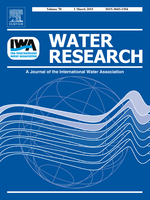
WATER RESEARCH
Elevating knowledge in water sustainability and management.WATER RESEARCH, published by Pergamon-Elsevier Science Ltd, is a premier international journal dedicated to the advancement of knowledge in the interdisciplinary field of water science and technology. With a significant impact factor, WATER RESEARCH holds a distinguished position, consistently ranking in the top quartile (Q1) across multiple categories including Civil and Structural Engineering, Environmental Engineering, and Pollution. Established in 1967 and set to continue its legacy until at least 2024, this journal provides a vital platform for researchers and professionals to disseminate cutting-edge findings related to water sustainability, quality, and management. Although the journal follows a traditional access model, its commitment to disseminating impactful research ensures that it remains an essential resource for academia and industry alike. With a rigorous selection process, the journal includes articles that significantly contribute to the understanding and resolution of global water-related challenges, making it an invaluable asset for researchers, students, and practitioners engaged in this critical area of study.